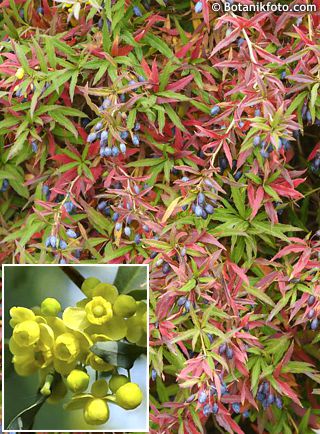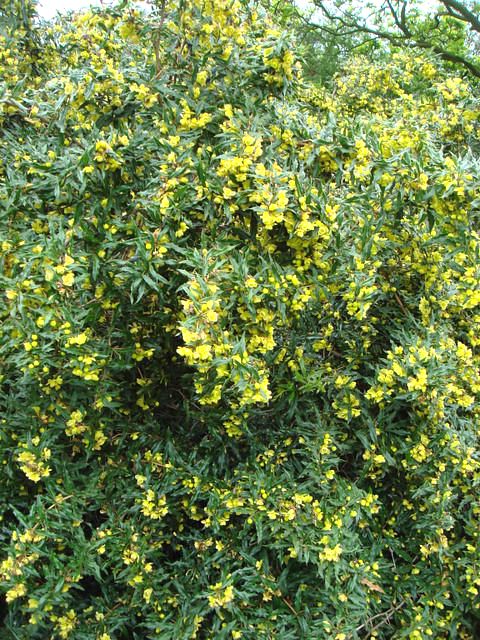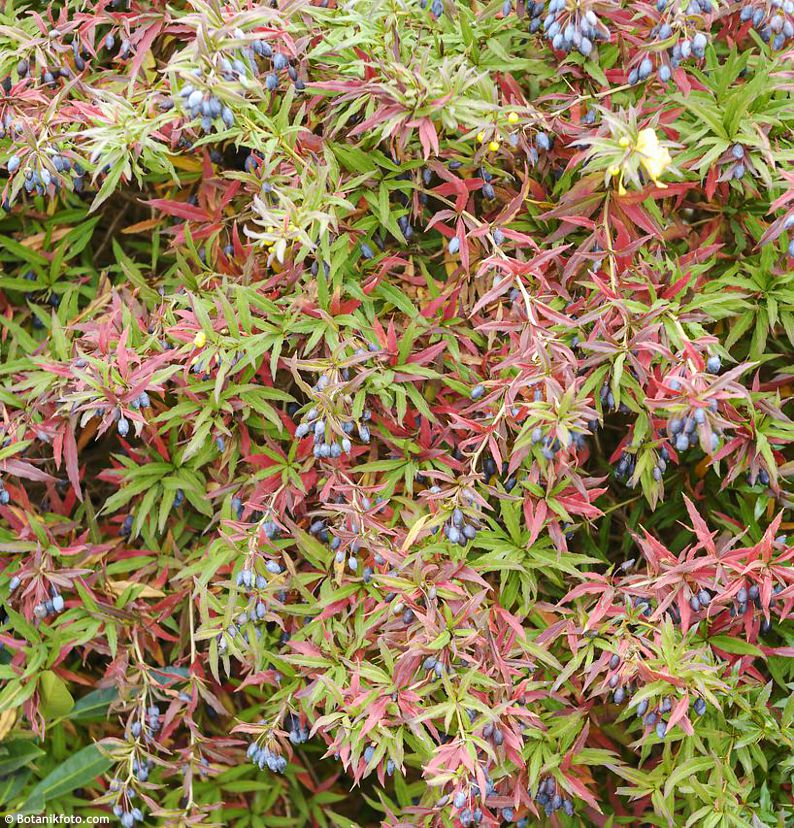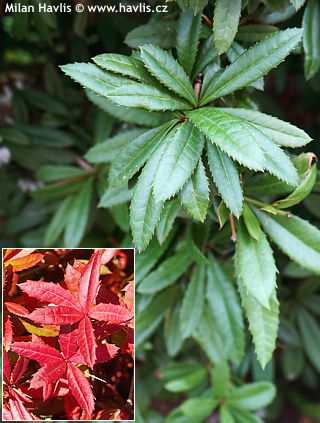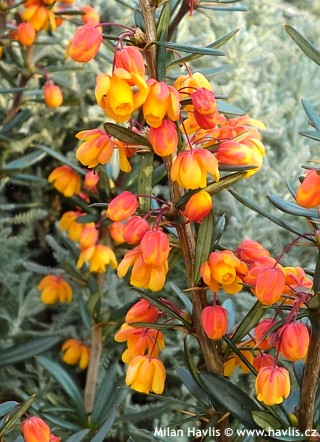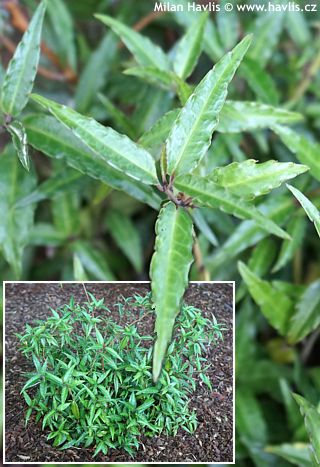Berberis gagnepainii var. lanceifolia Gagnepain's barberry
Berberis
Gagnepain’s barberry is an evergreen West Chinese species from Hubei and Sichuan where it grows in altitudes of 2000-4000 m. It forms dense shrubs which look airy thanks to narrow leaves. These might be entire, or gently serrated, or sharply toothed, and even undulated. Each foliage type has its variety name. It was first described around 1905.
Lanceifolia is a Gagnepain’s barberry selection producing narrowly lance-shaped, medium green leaves. They are evergreen, partly glossy, shallowly serrated at margins, and densely cover spiny twigs. In autumn they turn to carmine red and in spring change back to green. They resemble leaves of Chinese helwingia. In May and June appear small clusters of small, sulphur yellow, melliferous flowers that are followed by small, ovate, blue-bloomed, non-poisonous fruit. It is not unusual that in late summer there are some new flowers side by side with maturing blue fruit.
The shrub is dense and looks almost fluffy thanks to its fine foliage, yet somewhat irregular in shape and can be pruned in late spring right after flowering, never in spring – you would lose the flowers, or lightly clipped to shapes in midsummer. 1-3 cm long spines on the branches make it an impenetrable barrier for unwanted animals. In the wild its mature height can reach up to 2m, however, in cultivation it usually keeps between 1 and 1.5m tall.
Evergreen barberries will grow in almost any well-drained soil that will not dry out for longer than a month. It does not need mulching but will benefit from constant moisture. No fertilizing is needed but is possible, and will result in a bushier, faster growing shrub with larger leaves. It is very hardy to abt. -29°C (USDA zone 5).
Last update 14-02-2020

































